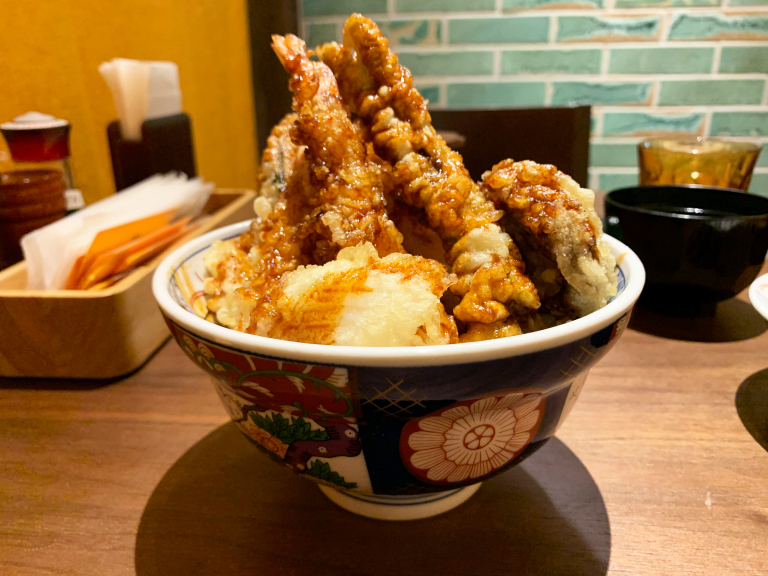
What kind of flair does Singaporean tempura have? Let’s find out!
Did you know that much of the food we know and love has taken a long journey across the world and across history to become what it is today? Curry, for example, was brought to Japan from India through England, after which it was adapted into Japanese curry. Funnily enough, popular Japanese curry chain CoCo Ichibanya now has a branch in both England and India, resulting in an interesting cycle of importation and exportation, as well as, of course, a delightful array of curry types.
Now the cycle is happening with tempura, too! Tempura is known as a quintessential Japanese dish, but it was actually brought to Japan by Portuguese traders in the 16th and 17th centuries, in the form of a battered and fried green bean dish called peixinhos da horta. More recently, tempura was also brought to Singapore, where it has been further adapted to suit Singaporean tastes, and now that new version has made its way back to Japan!
What does Singaporean tempura taste like? How does it compare to Japanese tempura? Of course, we had to try it to find out.
You can find Singaporean tempura bowls in Tokyo at a newly opened restaurant known as Tendon Kohaku, which opened on March 29 on the first floor of the Coredo Muromachi Terrace shopping center in Nihonbashi. It’s actually a highly popular tempura bowl chain restaurant in Singapore, though on the outside it looks like any regular tempura shop that you’d find in Japan.
The menu revealed that the restaurant also has branches in Malaysia, the Philippines, and even Canada, as well as Singapore, so it had clearly established itself long before opening its first branch in Japan. Since the restaurant originated in Singapore, however, we expected the tempura to have a Singaporean flair when we arrived at the Nihonbashi branch, and we were right–to an extent.
When ordering from Tendon Kohaku, you have a choice between two different sauces: “Original Sauce” and “Spicy Sauce”. We were most intrigued with the spicy sauce, since Japanese tempura is generally served with a salty-sweet sauce, which is never spicy. We ordered the restaurant’s specialty bowl, the “Kohaku Tendon” (1,000 yen [US$9.25]), with the spicy sauce to get the full Tendon Kohaku experience….
…And it turned out to be super spicy!!
Every bite of the tempura was a fresh fiery burn on our tongues. Some might not like this level of spice, which has a distinct Southeast Asian aspect, but for us it was really tasty.
The quality of the tempura was also really good. The batter on the shrimp was light but satisfyingly crunchy, and the chicken was tender inside its crunchy exterior. The batter also clung to each ingredient, with no peeling or sogginess, making it well worth the cost of 1,000 yen. We gave the original sauce a try too, and its flavor was similar enough to Japanese flavors that you would never know it was created in another country. It tasted like a high-quality Japanese tempura bowl.
But why are the flavors of Kohaku’s tempura bowls so close to Japanese flavors? As we have seen with Japanese dishes in other countries, like sushi and ramen, there’s often something non-traditional about them that makes them unique. But Tendon Kohaku’s tempura bowl tastes like a Japanese dish. Why is that?
One reason could be in the restaurant’s origins. Tendon Kohaku is actually affiliated with Fuji Soba, a Japanese soba restaurant. Fuji Soba provided support for the development Tendon Kohaku when it opened in Singapore. To get more information, we spoke to Mr. Kudo, who works for the marketing department of Fuji Soba, and who helped with the beginnings of Tendon Kohaku.
“Tempura bowls are widely popular in Singapore right now. Spicy sauces like chili sauce are a cultural foundation there, so adding spicy sauce to tempura bowls makes it very popular. By the way, Kohaku’s tempura bowl sauce is basically spicy red peppers mixed with tempura sauce.”
So there you have it; the closeness of flavor is because it was developed with the help of Japanese chefs, then catered to Singaporean tastes. That’s also why it’s become so popular in Singapore! Tempura bowls are a surprisingly adaptable food. Who would’ve thought?
From Portugal, to Japan, to Singapore and back to Japan: tempura sure has taken a long journey to become what it is now. Where will it go next, and how will be transformed? We can’t wait to find out.
Restaurant information:
Tendon Kohaku Coredo Muromachi Terrace / 天丼 琥珀 コレド室町テラス
Address: Tokyo-to Chuo-ku Nihonbashi Muromachi 3-2-1 Coredo Muromachi Terrace Section 1-13
東京都中央区日本橋室町3-2-1 コレド室町テラス1‐13区画
Open 11 a.m.-3 p.m., 5 p.m.-8 p.m. (weekdays), 11 a.m.-8 p.m. (weekends, holidays)
Photos © SoraNews24
● Want to hear about SoraNews24’s latest articles as soon as they’re published? Follow us on Facebook and Twitter!

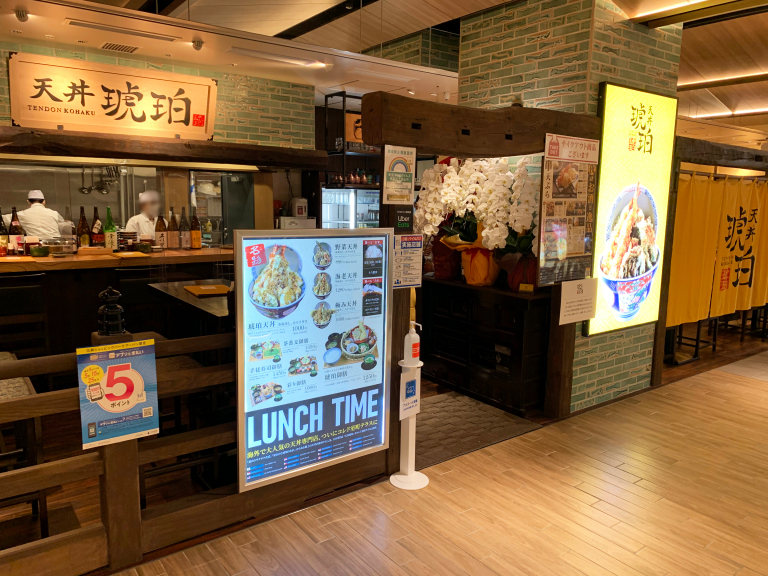
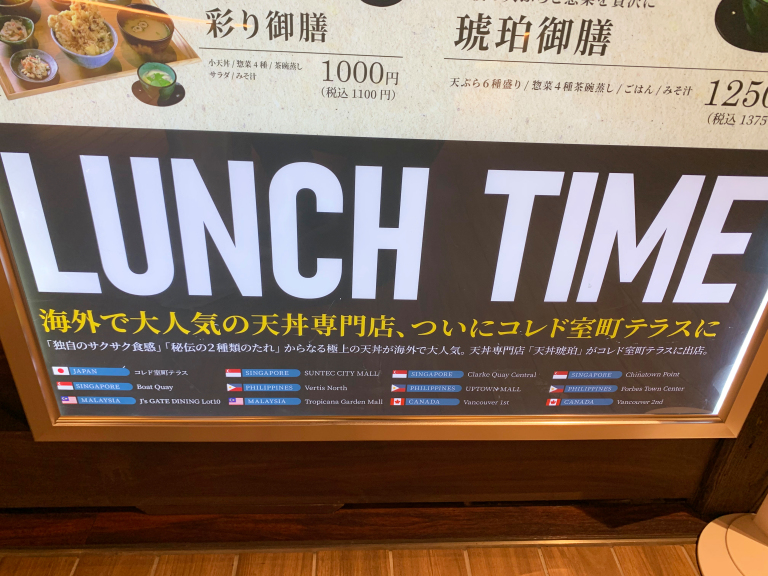
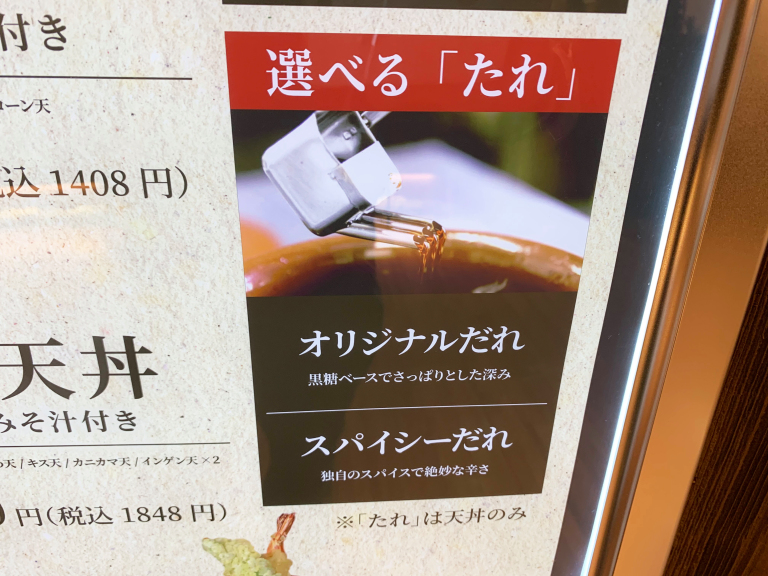
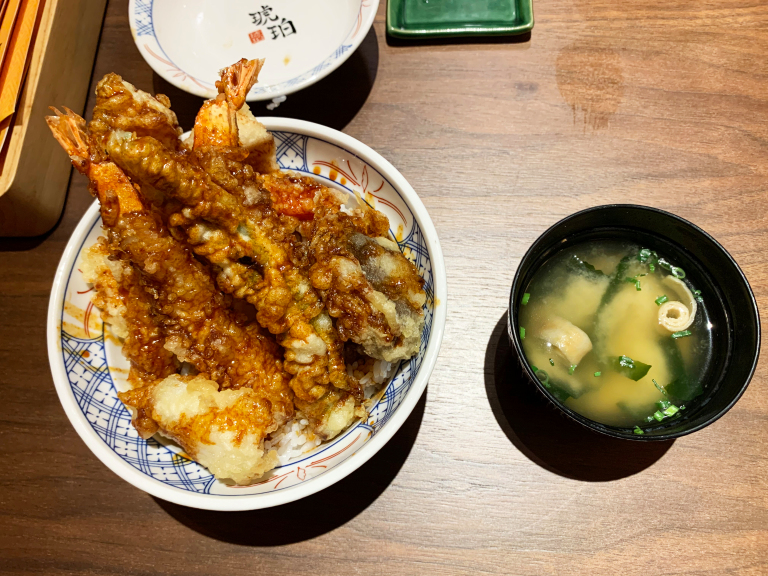
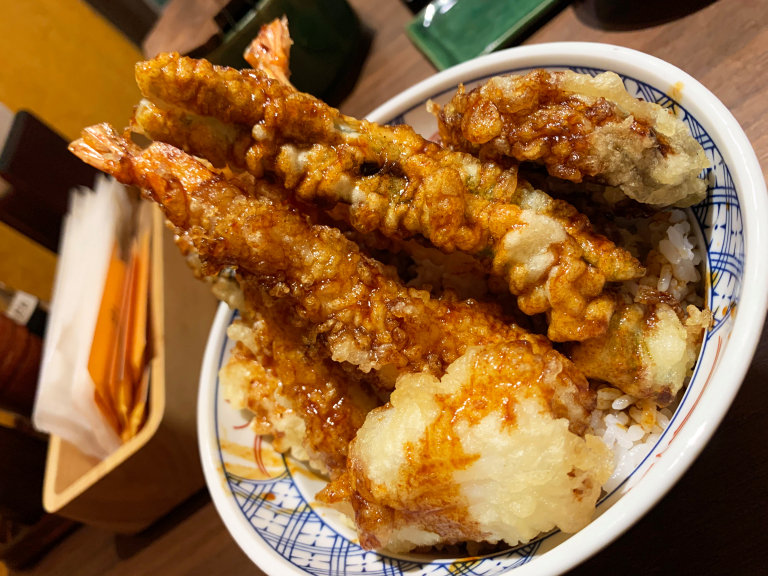
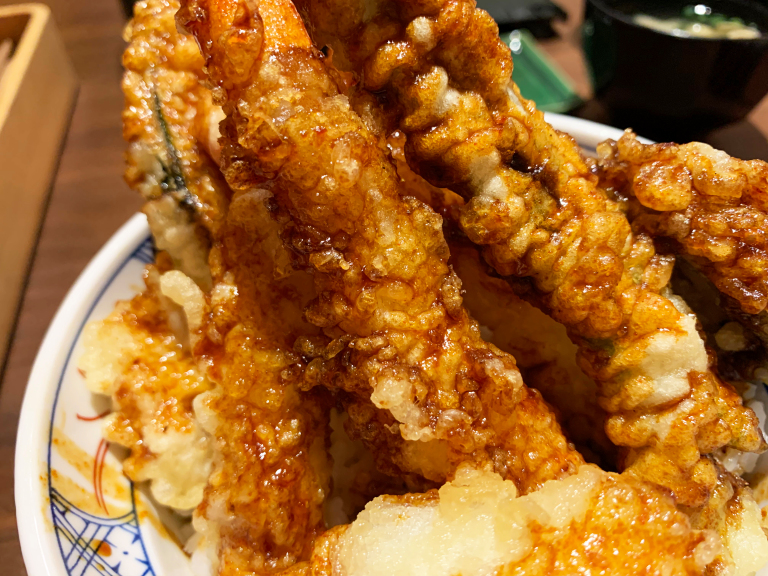


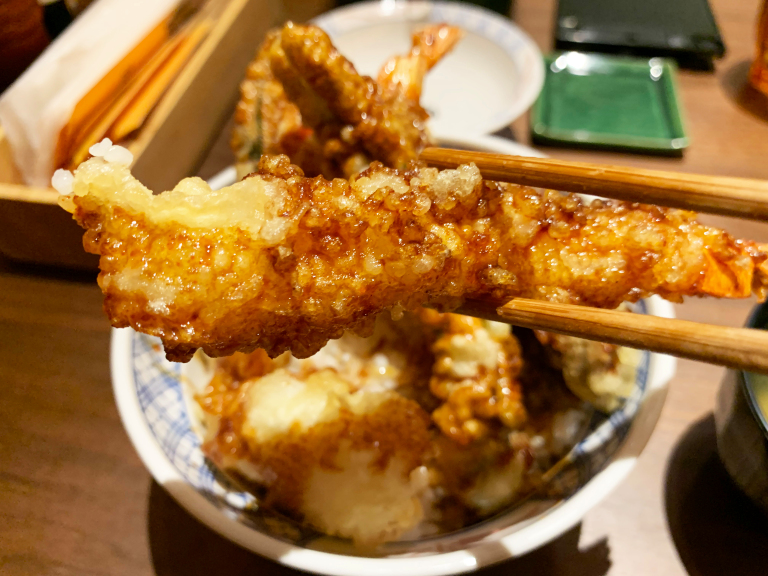
 We enjoy oyster tempura max on rice at tempura chain Tenya!【Pics】
We enjoy oyster tempura max on rice at tempura chain Tenya!【Pics】 This is Japan’s oldest tempura restaurant, and it’s awesome
This is Japan’s oldest tempura restaurant, and it’s awesome Tokyo restaurant offers “DIY Tempura Bowls,” so of course we had to go check it out
Tokyo restaurant offers “DIY Tempura Bowls,” so of course we had to go check it out Using tempura as a ramen topping – Blasphemy, or a beautiful idea?【Taste test】
Using tempura as a ramen topping – Blasphemy, or a beautiful idea?【Taste test】 This Tempura Soba Burger has some famous credentials behind its creation
This Tempura Soba Burger has some famous credentials behind its creation Hayao Miyazaki says Happy New Year to Studio Ghibli fans with new art for Year of the Horse
Hayao Miyazaki says Happy New Year to Studio Ghibli fans with new art for Year of the Horse We revisited Sweets Paradise after a decade to see if Japan’s dessert buffet still delivers
We revisited Sweets Paradise after a decade to see if Japan’s dessert buffet still delivers 7 great places to see Mt. Fuji from without having to climb it
7 great places to see Mt. Fuji from without having to climb it Japan’s two-month Shut-in Pilgrimage – A 1,200-year-old way to deal with a modern issue
Japan’s two-month Shut-in Pilgrimage – A 1,200-year-old way to deal with a modern issue Draw like a Studio Ghibli anime artist with exclusive watercolour set approved by Hayao Miyazaki
Draw like a Studio Ghibli anime artist with exclusive watercolour set approved by Hayao Miyazaki Saikaku’s Edo-era tales of gay samurai love reimagined for a modern audience as Boys Love manga
Saikaku’s Edo-era tales of gay samurai love reimagined for a modern audience as Boys Love manga 7 reasons why you should visit Aomori Prefecture
7 reasons why you should visit Aomori Prefecture A close encounter with a dangerous criminal on a Shinkansen bullet train in Japan
A close encounter with a dangerous criminal on a Shinkansen bullet train in Japan Japanese group to hold fashion show of colostomy bags and other stoma equipment in Paris
Japanese group to hold fashion show of colostomy bags and other stoma equipment in Paris There’s a new museum in Japan, but almost all of its location is a secret
There’s a new museum in Japan, but almost all of its location is a secret Starbucks Japan ready to get Year of the Horse started with adorable drinkware and plushies【Pics】
Starbucks Japan ready to get Year of the Horse started with adorable drinkware and plushies【Pics】 7-Eleven Japan’s ramen-cooking robot whipped us up a bowl of noodles【Taste test】
7-Eleven Japan’s ramen-cooking robot whipped us up a bowl of noodles【Taste test】 Cyberpunk anime meets traditional culture in Ghost in the Shell gold leaf Japanese changing screens
Cyberpunk anime meets traditional culture in Ghost in the Shell gold leaf Japanese changing screens Hello Kitty Choco Egg figures are an adorable trip through three periods of Japanese pop culture【Pics】
Hello Kitty Choco Egg figures are an adorable trip through three periods of Japanese pop culture【Pics】 Japan’s otoshidama tradition of giving kids money at New Year’s gets a social welfare upgrade
Japan’s otoshidama tradition of giving kids money at New Year’s gets a social welfare upgrade We found possibly the quietest Japanese-style hotel in Tokyo’s bustling Shinjuku district
We found possibly the quietest Japanese-style hotel in Tokyo’s bustling Shinjuku district Lacquerware supplier to emperor of Japan and Pokémon team up for new tableware
Lacquerware supplier to emperor of Japan and Pokémon team up for new tableware Sumo Sanrio! Hello Kitty and pals team up with Japan Sumo Association for new merch【Pics】
Sumo Sanrio! Hello Kitty and pals team up with Japan Sumo Association for new merch【Pics】 Can a dirty butthole make you filthy rich in Japan? We’re starting a New Year’s lottery experiment
Can a dirty butthole make you filthy rich in Japan? We’re starting a New Year’s lottery experiment 7-Eleven Japan starts new temporary luggage storage service in over 300 branches
7-Eleven Japan starts new temporary luggage storage service in over 300 branches Disillusionment at Tsukiji’s tourist-target prices led us to a great ramen restaurant in Tokyo
Disillusionment at Tsukiji’s tourist-target prices led us to a great ramen restaurant in Tokyo Starbucks teams up with 166-year-old Kyoto doll maker for Year of the Horse decorations【Photos】
Starbucks teams up with 166-year-old Kyoto doll maker for Year of the Horse decorations【Photos】 Tokyo considering law requiring more trash cans following litter increase in heavily touristed area
Tokyo considering law requiring more trash cans following litter increase in heavily touristed area Tokyo’s Tsukiji sushi neighborhood asks tour groups to stay away for the rest of the month
Tokyo’s Tsukiji sushi neighborhood asks tour groups to stay away for the rest of the month Nintendo’s Kirby now delivering orders at Kura Sushi restaurants, but not in Japan
Nintendo’s Kirby now delivering orders at Kura Sushi restaurants, but not in Japan Tokyo event lets you travel back in time, for free, to celebrate 100 years since Showa era start
Tokyo event lets you travel back in time, for free, to celebrate 100 years since Showa era start Sanrio theme park in Japan announces plans to expand into a Sanrio resort
Sanrio theme park in Japan announces plans to expand into a Sanrio resort Japan may add Japanese language proficiency, lifestyle classes to permanent foreign resident requirements
Japan may add Japanese language proficiency, lifestyle classes to permanent foreign resident requirements Survey asks foreign tourists what bothered them in Japan, more than half gave same answer
Survey asks foreign tourists what bothered them in Japan, more than half gave same answer Japan’s human washing machines will go on sale to general public, demos to be held in Tokyo
Japan’s human washing machines will go on sale to general public, demos to be held in Tokyo Japan’s deadliest food claims more victims, but why do people keep eating it for New Year’s?
Japan’s deadliest food claims more victims, but why do people keep eating it for New Year’s? We deeply regret going into this tunnel on our walk in the mountains of Japan
We deeply regret going into this tunnel on our walk in the mountains of Japan Studio Ghibli releases Kodama forest spirits from Princess Mononoke to light up your home
Studio Ghibli releases Kodama forest spirits from Princess Mononoke to light up your home Major Japanese hotel chain says reservations via overseas booking sites may not be valid
Major Japanese hotel chain says reservations via overseas booking sites may not be valid Put sesame oil in your coffee? Japanese maker says it’s the best way to start your day【Taste test】
Put sesame oil in your coffee? Japanese maker says it’s the best way to start your day【Taste test】 No more using real katana for tourism activities, Japan’s National Police Agency says
No more using real katana for tourism activities, Japan’s National Police Agency says Starbucks Japan reveals new sakura drinkware collection, inspired by evening cherry blossoms
Starbucks Japan reveals new sakura drinkware collection, inspired by evening cherry blossoms Updated cherry blossom forecast shows extra-long sakura season for Japan this year
Updated cherry blossom forecast shows extra-long sakura season for Japan this year KFC sells rice bowls in Japan, but are they finger-lickin’ good? 【Taste Test】
KFC sells rice bowls in Japan, but are they finger-lickin’ good? 【Taste Test】 New form of luxurious poverty arrives at Japanese convenience stores with Tenkasu Gohan
New form of luxurious poverty arrives at Japanese convenience stores with Tenkasu Gohan Kakiage towers and Italian soba? We try out a unique soba restaurant in Tokyo
Kakiage towers and Italian soba? We try out a unique soba restaurant in Tokyo The best soba restaurant on Yakushima island, according to locals
The best soba restaurant on Yakushima island, according to locals We ate all eight kinds of cold noodles from 7-Eleven and here’s our favourites【Taste test】
We ate all eight kinds of cold noodles from 7-Eleven and here’s our favourites【Taste test】 Japanese restaurant serves extra wide noodles next to Tokyo Station
Japanese restaurant serves extra wide noodles next to Tokyo Station Ninja Soba Goemon: A Japanese restaurant that’s like a ninja hideout
Ninja Soba Goemon: A Japanese restaurant that’s like a ninja hideout Eating Japanese katsudon once served in police interrogation rooms
Eating Japanese katsudon once served in police interrogation rooms Best all-you-can-eat okonomiyaki in Japan? Restaurant chain serves up a feast for under $14
Best all-you-can-eat okonomiyaki in Japan? Restaurant chain serves up a feast for under $14 We visit “Rice and Circus,” a restaurant that combines bugs and Japanese-style cooking【Photos】
We visit “Rice and Circus,” a restaurant that combines bugs and Japanese-style cooking【Photos】
Leave a Reply